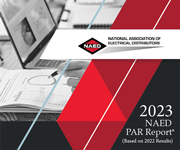Cree and MaxBrite has filed a report in U.S. District Court that they have settled the patent infringement case brought by Cree in November of 2016.
The case claimed MaxBrite infringed on a Cree patent and trademark for a design in MaxBrite’s Shoebox Parking Lot Fixtures. Cree bought of the LED lights from MaxBrite and had an investigator search for Cree products. The packaging for the Shoebox Parking Lot Fixtures says the fixtures contain “Cree LED light source, 14029 lumen”. The suit claimed the investigator took about the fixtures, and they did not contain Cree products.
MaxBrite responded to the claim two months later by “denying each and every allegation” made by Cree. Terms of the settlement, which was filed with the U.S. District Court in San Jose, California, were not disclosed. MaxBrite is headquartered in that area.
Last year, Cree announced that it would aggressively protect its patents and trademarks. It filed a similar suit against flashlight company E. Mishan & Sons just days before filing the suit against MaxBrite. In the filing against MaxBrite, it did mention that it warned MaxBrite about patent infringement months earlier.
Here is a part of the patent infringement filing that explains how the process of discovery worked:
30. The LED Canopy Gas Station Luminaire purchased and received from Defendants was inspected by Plaintiff to determine its authenticity. Plaintiff’s inspection of the purchased item confirmed that the item Defendants sold and distributed infringed upon the CREE Design Patents.
31. On July 26, 2016, and August 8, 2016, Plaintiff’s investigator purchased LED Shoebox Parking Lot Fixtures from Defendants through its website, www.maxbriteled.com, for costs of $525.57 and $431.77, respectively, paid for by PayPal electronic fund transfers. The listings on www.maxbriteled.com advertised that each of the two purchased products contained a “Cree LED light source, 14,029 lumen.”
32. The two LED Shoebox Parking Lot Fixtures purchased and received from Defendants were inspected by Plaintiff to determine their authenticity. Plaintiff’s inspection of the purchased items confirmed that the items Defendants sold and distributed did not contain Plaintiff’s LED light products or component parts. The “light source” on the products did not originate from Plaintiff, was not manufactured or distributed by Plaintiff, and was not authorized by Plaintiff.
33. By these sales, and on information and belief, Defendants violated and continue to violate Plaintiff’s exclusive rights in its trademarked and patented lighting products, components, and related goods and services, and use images and marks which are confusingly similar to, identical to, and/or constitute infringing reproductions of Plaintiff’s trademarks and design patented products to confuse consumers and aid in the promotion and sales of their unauthorized goods.
Tagged with Cree, MaxBrite, patent infringement




